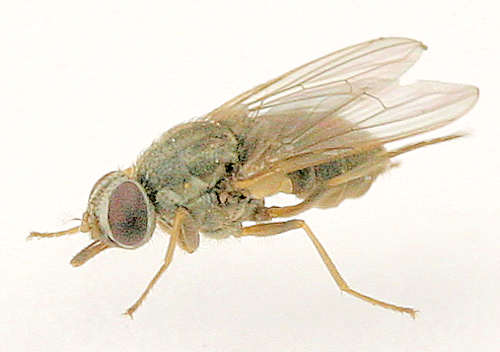
I look in on a couple of internet discussion forums on a regular basis just to see what the status quo whiz kids are saying and thinking. On Monday, February 1st, one discussion forum started a thread on “Horn Fly Control.” Really? In February? That seems a little early. I usually don’t see much discussion on fly control until May and June – when it quickly becomes the hottest topic within the beef industry. I suspect memories of last summer’s horrific fly problems are still fresh in some minds.
Of course, members of this forum shared their favorite “toxic chemical” solutions and combinations to remedy the horn fly problem – which, by the way, costs the beef industry over $800 million every year in production losses. Research has shown horn flies can reduce daily gains by as much as ½ pound per day. That could amount to 100 pounds per calf at weaning. The recommendations included fly tags, pour-ons, rubs, sprays and insect growth regulators (IGR).
When these pesky flies develop a resistance to one toxic chemical, the drug companies will create a new one to sell you. Although this ridiculous cycle has been ongoing for several decades, the horn fly problem is worse now than ever before.
When I looked in on this discussion yesterday morning, I was surprised and delighted to see that someone GOT IT RIGHT! Following are his suggestions:
- First year… Sell cows with most flies
- Second year… Sell cows with most flies
- Third year… Sell cows with most flies, and consider rotational grazing
The reason the beef industry has not been able to solve the horn fly problem is because it continues to treat the symptoms of the problem while it totally ignores the problem. The problem is a genetic problem. It can only be solved by eliminating cattle that do not have any genetic resistance to horn flies.
I might have suggested rotational grazing sooner than the third year. The life cycle of the horn fly, from egg to adult, takes 10 to 20 days depending on conditions. Properly done, rotational grazing will have the cowherd far enough away that the emerging adult flies will not be able to find a host animal.
There is one thing missing from the above recommendations. You can sell all of the cows that do not have any genetic fly resistance – but if you continue to use bulls that do not have any genetic fly resistance, you will be fighting this battle forever!
Genetic parasite resistance is one of many areas in which Pharo Cattle Company has assumed the leadership position. We have been evaluating and scoring the bulls we sell for fly resistance for 14 years. All of the bulls in our upcoming Texas and Missouri bull sales have been evaluated and scored for fly resistance. Where else can you find bulls that were bred, selected and evaluated for horn fly resistance?